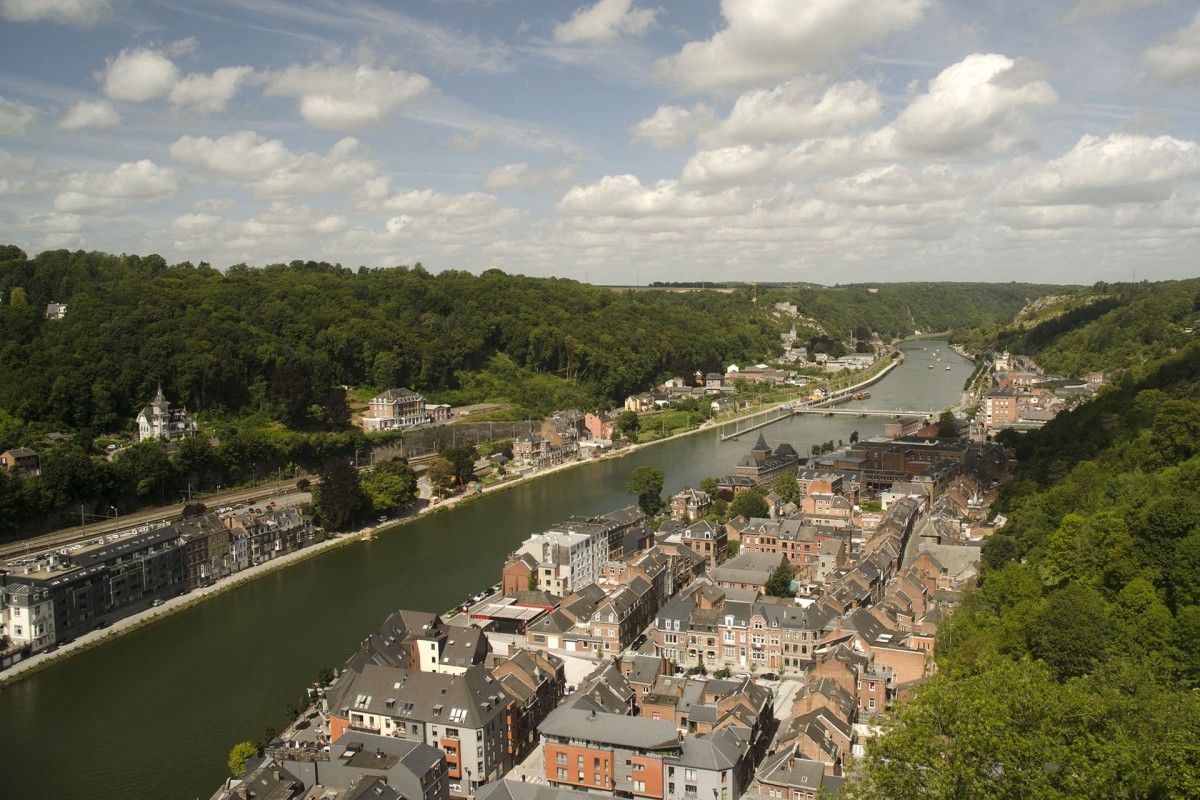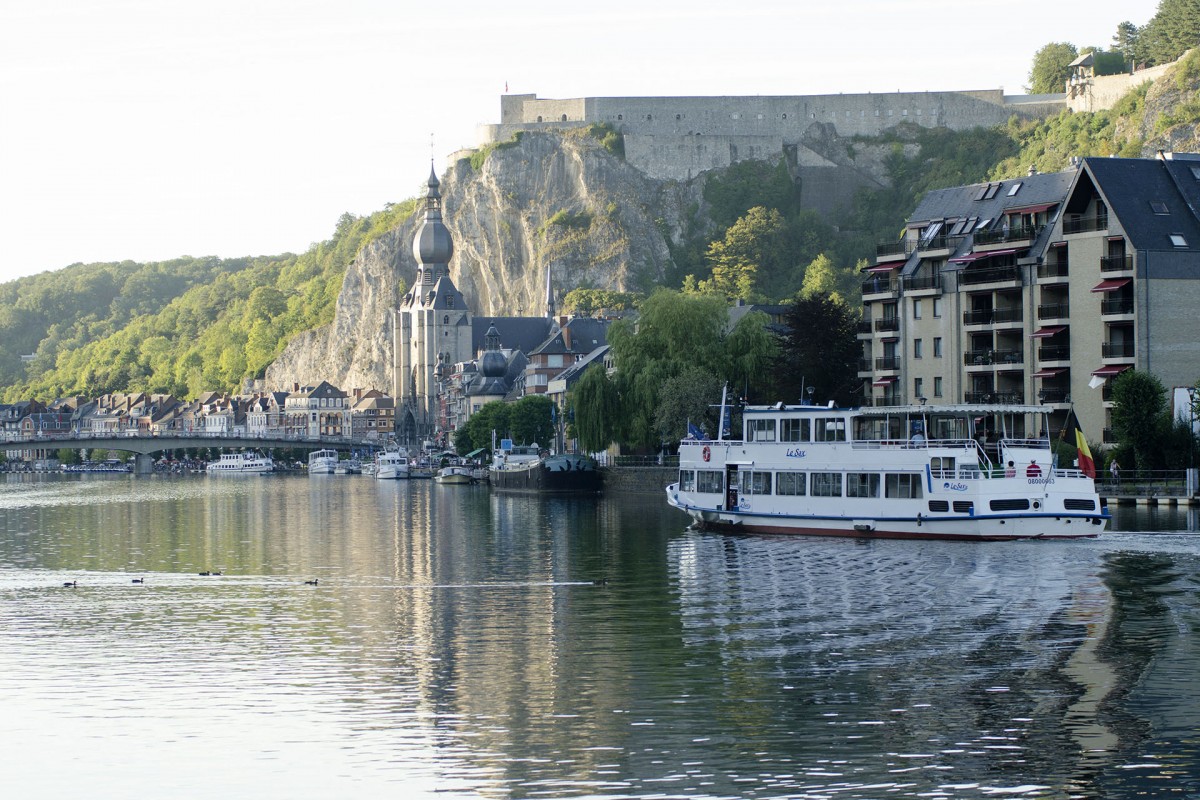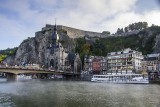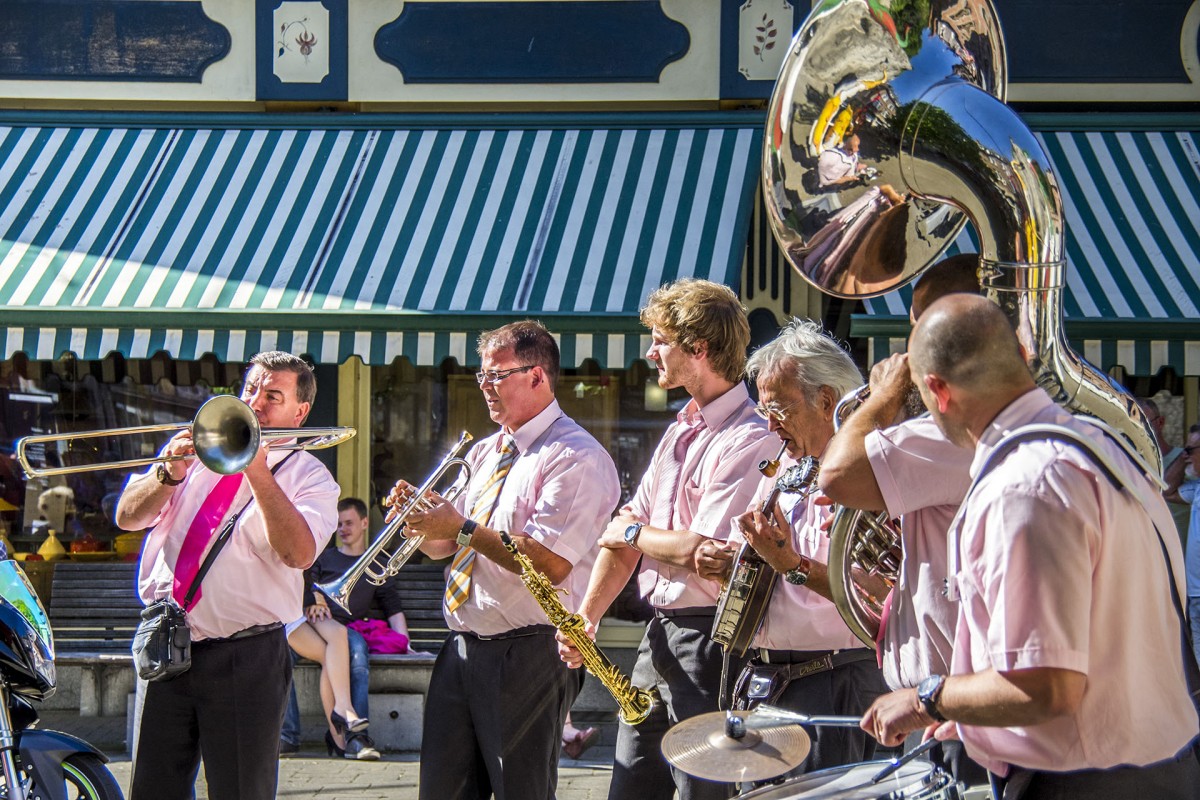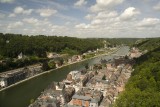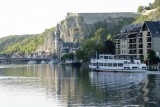Dinant
The birthplace of Adolphe Sax, sculpted into the rock
Dinant, the city of the saxophone, has a truly spectacular layout with its impressive rocks, its green nature, and its location on the banks of the river. Its citadel and its history, as well as its gastronomic specialties and its culture, are also worth seeing!
Discover more than nine centuries of history
A jewel of European tourism in 2015, Dinant notably owes this to its superb citadel. Although it is less well known than that of Namur, it is nonetheless a staple of Walloon heritage. Overlooking the city of Dinant and the Meuse valley, the citadel was constructed by the Prince Bishop of Liège in 1815.
You can reach the summit of this fortress by cable car or, for the bravest visitors, on foot. A stunning view of the Meuse and one of the most beautiful valleys in Europe should not be missed under any circumstances!
A city moving to the beat of Adolphe Sax
Did you know that Dinant is the birthplace of this inventor of instruments? To find out more about this while visiting the city, complete the route that links the different stops referring to this famous figure.
Want to discover the Meuse in a different way?
Dinant is the ideal place for activities on the water, which allow you to enjoy real moments of well-being and calm. Take a cruise along the Meuse with Dinant Evasion. Discover Freÿr by following the flow of the water, which will allow you to admire the Anseremme Priory and the Freÿr rocks, the largest Belgian massif for climbing. After hearing the commentaries, the curiosities of the journey, which include historic monuments, old buildings or secret places, will no longer hold any secrets for you.
Try the famous “couque de Dinant”
After your visit to the citadel or before your cruise, try, in complete peace, the delicacies of the Dinant region, the most well known of which is the “couque de Dinant”.
Making local confectioners famous, this hard biscuit, which is made from honey and flour, is shaped into wooden moulds in a variety of shapes and has the distinction of appearing "hard", but, once put in the mouth, it literally melts on the tongue.
Dinant, the city of the saxophone, has a truly spectacular layout with its impressive rocks, its green nature, and its location on the banks of the river. Its citadel and its history, as well as its gastronomic specialties and its culture, are also worth seeing!
Discover more than nine centuries of history
A jewel of European tourism in 2015, Dinant notably owes this to its superb citadel. Although it is less well known than that of Namur, it is nonetheless a staple of Walloon heritage. Overlooking the city of Dinant and the Meuse valley, the citadel was constructed by the Prince Bishop of Liège in 1815.
You can reach the summit of this fortress by cable car or, for the bravest visitors, on foot. A stunning view of the Meuse and one of the most beautiful valleys in Europe should not be missed under any circumstances!
A city moving to the beat of Adolphe Sax
Did you know that Dinant is the birthplace of this inventor of instruments? To find out more about this while visiting the city, complete the route that links the different stops referring to this famous figure.
Want to discover the Meuse in a different way?
Dinant is the ideal place for activities on the water, which allow you to enjoy real moments of well-being and calm. Take a cruise along the Meuse with Dinant Evasion. Discover Freÿr by following the flow of the water, which will allow you to admire the Anseremme Priory and the Freÿr rocks, the largest Belgian massif for climbing. After hearing the commentaries, the curiosities of the journey, which include historic monuments, old buildings or secret places, will no longer hold any secrets for you.
Try the famous “couque de Dinant”
After your visit to the citadel or before your cruise, try, in complete peace, the delicacies of the Dinant region, the most well known of which is the “couque de Dinant”.
Making local confectioners famous, this hard biscuit, which is made from honey and flour, is shaped into wooden moulds in a variety of shapes and has the distinction of appearing "hard", but, once put in the mouth, it literally melts on the tongue.

